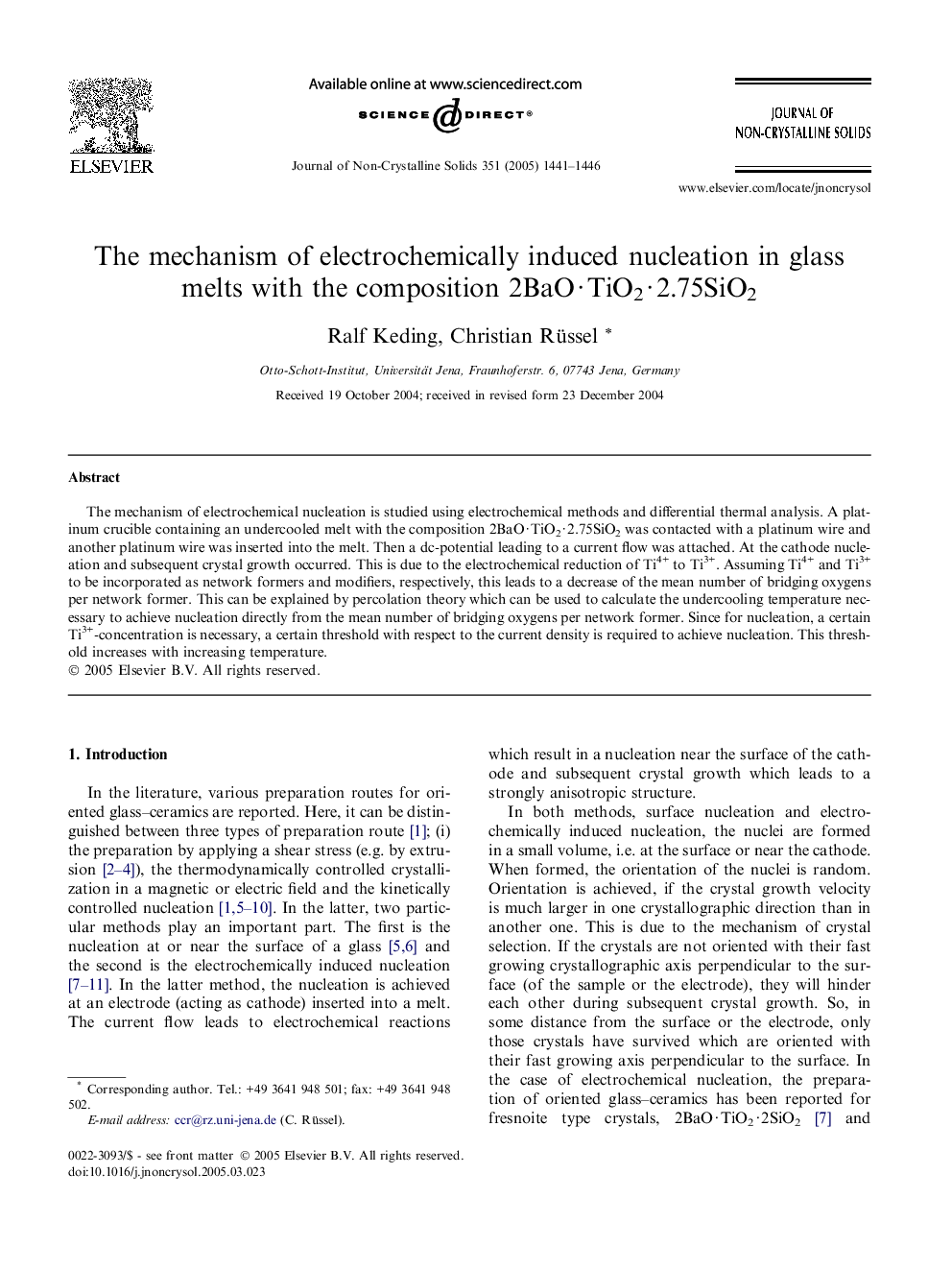| Article ID | Journal | Published Year | Pages | File Type |
|---|---|---|---|---|
| 9778087 | Journal of Non-Crystalline Solids | 2005 | 6 Pages |
Abstract
The mechanism of electrochemical nucleation is studied using electrochemical methods and differential thermal analysis. A platinum crucible containing an undercooled melt with the composition 2BaO · TiO2 · 2.75SiO2 was contacted with a platinum wire and another platinum wire was inserted into the melt. Then a dc-potential leading to a current flow was attached. At the cathode nucleation and subsequent crystal growth occurred. This is due to the electrochemical reduction of Ti4+ to Ti3+. Assuming Ti4+ and Ti3+ to be incorporated as network formers and modifiers, respectively, this leads to a decrease of the mean number of bridging oxygens per network former. This can be explained by percolation theory which can be used to calculate the undercooling temperature necessary to achieve nucleation directly from the mean number of bridging oxygens per network former. Since for nucleation, a certain Ti3+-concentration is necessary, a certain threshold with respect to the current density is required to achieve nucleation. This threshold increases with increasing temperature.
Related Topics
Physical Sciences and Engineering
Materials Science
Ceramics and Composites
Authors
Ralf Keding, Christian Rüssel,
